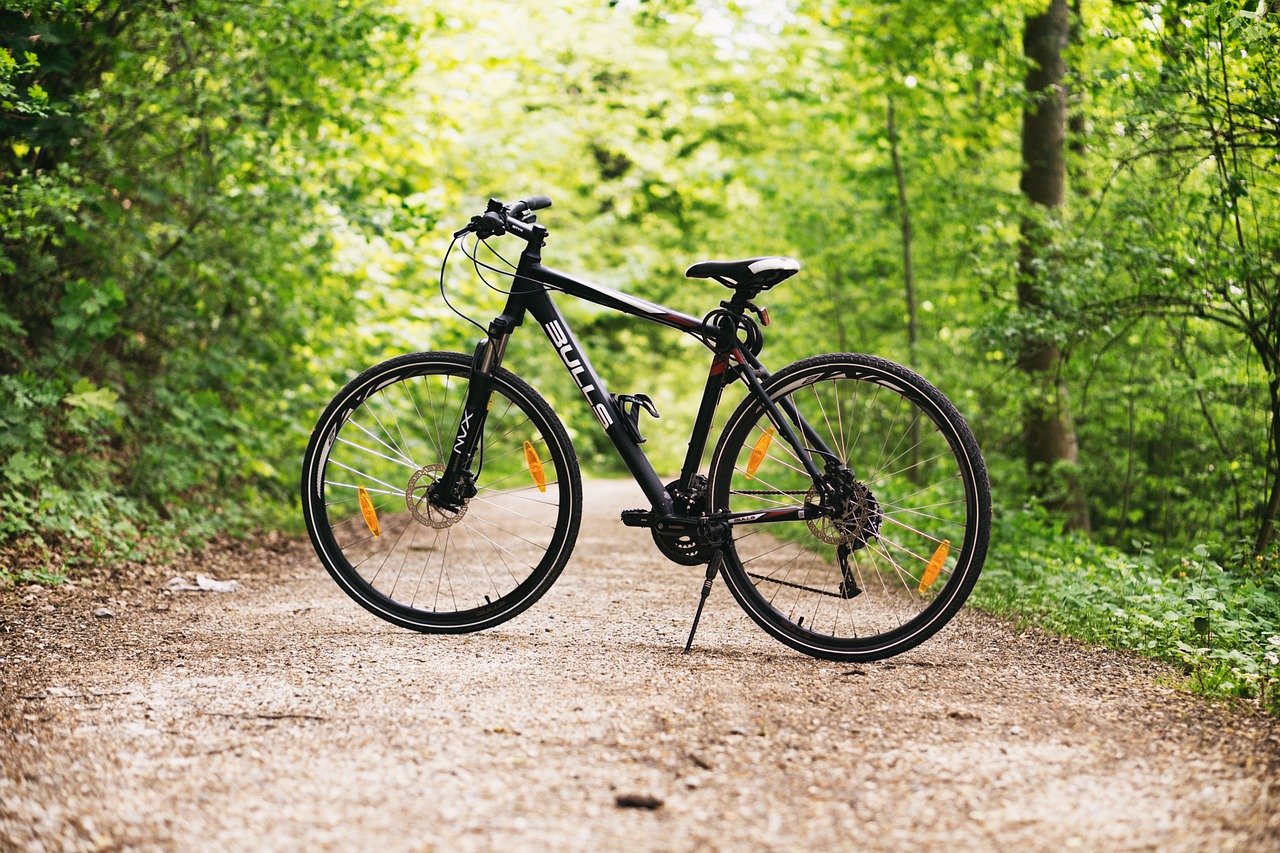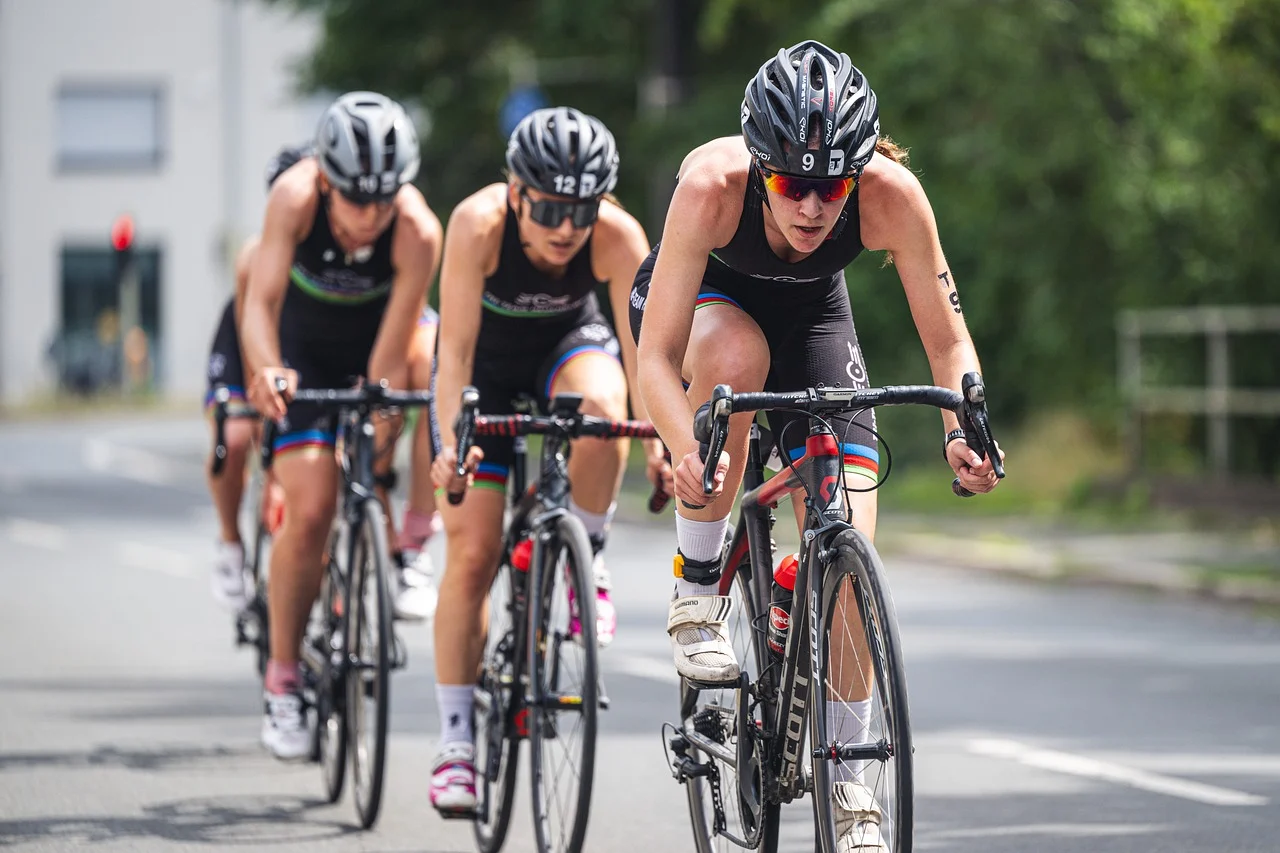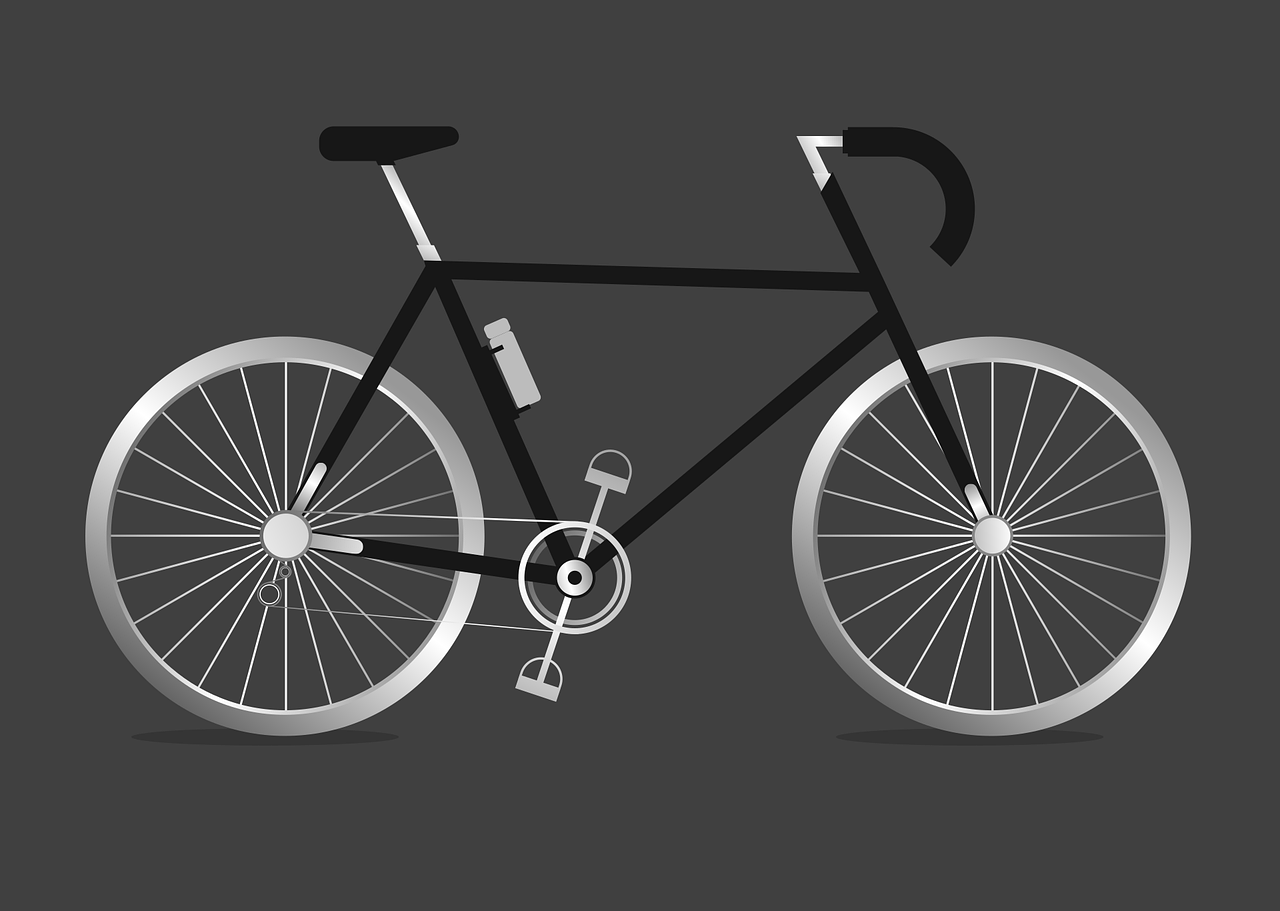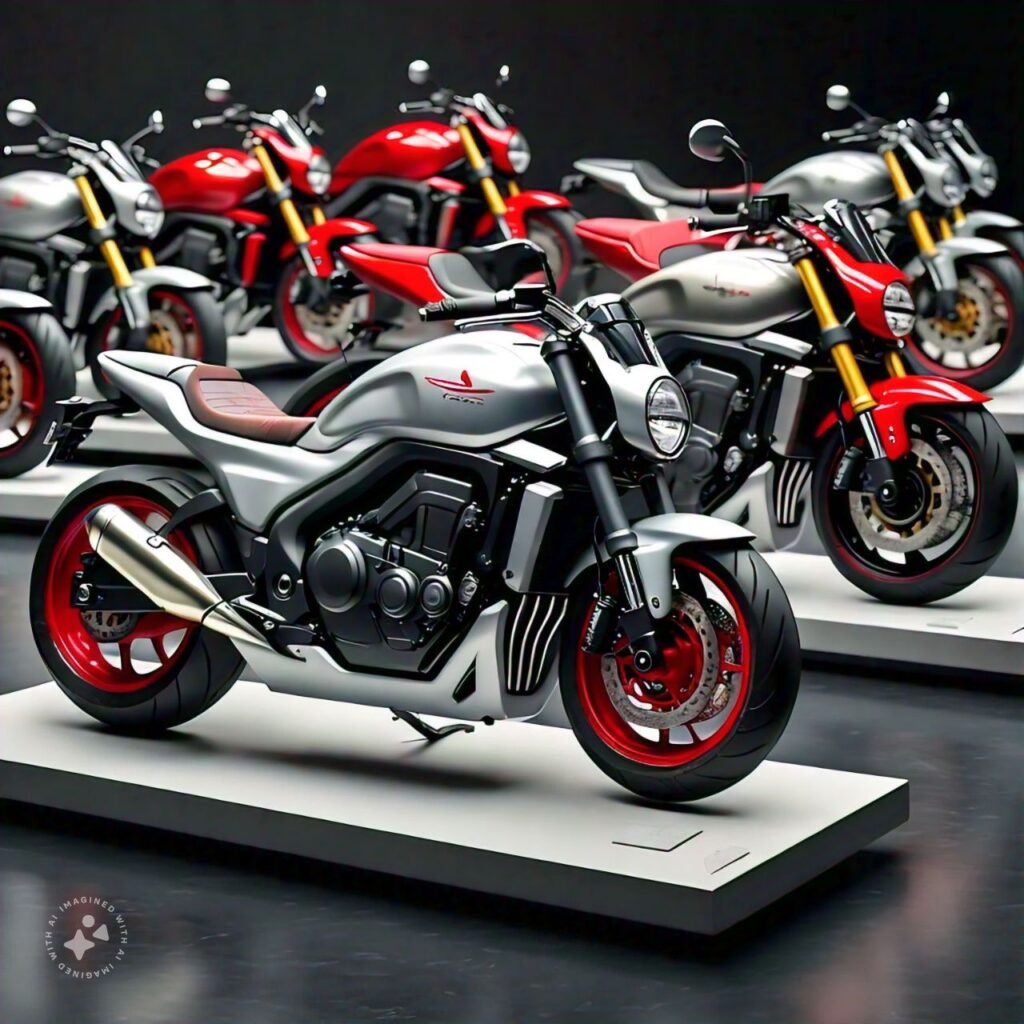Racing bike tyres play a pivotal role in maximizing the performance of your bicycle.
These tyres are specifically designed to enhance speed, agility, and overall efficiency, distinguishing them significantly from regular bike tyres.
The primary differences lie in their composition, size, and pressure requirements.
All of which contribute to their superior functionality in competitive cycling.
The composition of racing bike tyres typically involves lightweight materials such as high-thread-count casings and specialized rubber compounds.
These materials are meticulously chosen to provide a fine balance between durability and minimal rolling resistance.
In contrast, regular bike tyres are often construct with heavier.
More robust materials aimed at maximizing durability over diverse terrains, rather than optimizing speed.
When it comes to size, racing bike tyres are generally narrower than their regular counterparts.
This streamlined design reduces aerodynamic drag and rolling resistance, allowing for faster speeds.
The narrower profile also facilitates more precise handling, which is crucial during high-speed maneuvers and tight turns in racing scenarios.
Regular bike tyres, being wider, offer more stability and comfort over uneven surfaces, making them suitable for casual riding and commuting.
Another critical aspect is the tyre pressure.
Racing bike tyres require higher pressure levels, typically ranging between 80 to 130 psi (pounds per square inch).
Depending on the specific tyre and rider weight.
This high pressure minimizes rolling resistance and ensures optimal contact with the road surface, thereby enhancing speed and efficiency.
On the other hand, regular bike tyres operate at lower pressures, usually around 40 to 60 psi, to provide a more cushioned ride over varied terrains.
Maintaining the correct tyre pressure is paramount for both safety and performance.
Under-inflated tyres can lead to increased rolling resistance, reduced speed, and a higher risk of punctures.
Over-inflated tyres, on the other hand, can compromise grip and comfort, potentially leading to accidents.
Therefore, regularly checking and adjusting your racing bike tyres’ pressure is essential to ensure a safe and efficient ride.
Tools and Equipment Needed
Properly inflating your racing bike tyres is crucial for optimal performance, safety, and longevity.
To achieve this, it’s essential to have the right tools and equipment.
A high-quality floor pump with a pressure gauge is indispensable.
This type of pump allows for precise measurement of tyre pressure, ensuring you can achieve the optimal PSI (pounds per square inch) for your racing bike.

The pressure gauge is particularly important as it helps prevent both under-inflation and over-inflation, which can lead to poor performance or tyre damage.
In addition to the floor pump, a Presta valve adapter may be necessary.
Racing bikes often use Presta valves, which are different from the more common Schrader valves found on other types of bicycles.
The adapter enables you to use a standard pump if it isn’t explicitly designed for Presta valves.
This small yet essential accessory ensures that you can efficiently inflate your tyres without any compatibility issues.
Another useful accessory is a valve core removal tool.
This tool allows for easy removal of the valve core, which can be beneficial if you need to add sealant or if you encounter issues with the valve itself.
Additionally, having a set of tyre levers can come in handy for removing and reseating the tyre on the rim, especially if you need to make repairs or adjustments.
For those who frequently ride long distances or in varied conditions, a CO2 inflator can be a valuable piece of equipment.
It provides a quick and efficient way to inflate tyres on the go, making it a popular choice among competitive cyclists.
Each of these tools and accessories plays a vital role in maintaining the correct tyre pressure for your racing bike, contributing to a smoother ride, better control, and enhanced overall performance.
Ensuring you have these items readily available can make the process of inflating your tyres straightforward and efficient.
Understanding Tyre Pressure
Tyre pressure is a critical factor in the performance and safety of racing bikes.
It refers to the amount of air inside the tyre, measured in pounds per square inch (PSI) or bar.
Proper tyre pressure ensures optimal contact with the road, enhancing grip, reducing rolling resistance, and providing a smoother ride.
The right pressure can also prevent flats and improve the overall efficiency of the bike.
Determining the optimal tyre pressure involves considering several factors, including rider weight, riding conditions, and personal preference.
Heavier riders generally require higher tyre pressure to prevent pinch flats and maintain control, while lighter riders can use lower pressure for increased comfort and traction.
Road conditions also play a crucial role; for smoother surfaces, higher pressure is beneficial, whereas rougher terrains may necessitate slightly lower pressure to absorb shocks and maintain stability.
The tyre sidewall typically displays the recommended pressure range, often given as a minimum and maximum PSI or bar value.
Adhering to these guidelines is essential for both performance and safety.
Overinflating the tyres can lead to a harsh ride and increased risk of blowouts, while underinflating can cause sluggish handling and a higher likelihood of punctures.
It is vital to use a reliable pressure gauge to ensure accuracy when inflating your tyres.
Personal preference also influences tyre pressure selection.
Some cyclists prefer a firmer feel for greater speed and efficiency, while others opt for a softer setup for enhanced comfort and grip.
Experimenting within the recommended range can help you find the balance that suits your riding style and conditions best.
In summary, understanding and maintaining the correct tyre pressure for your racing bike is crucial for maximizing performance and ensuring safety.
Regularly checking and adjusting the pressure in accordance with the tyre manufacturer’s recommendations and considering personal and environmental factors will lead to an optimal riding experience.
Preparing the Tyre and Valve
Properly preparing your racing bike tyre and valve is a crucial step before inflation.
Begin by inspecting the tyre for any visible damage, such as cuts, punctures, or embedded debris, which could compromise safety during a ride.

It’s essential to address any identified issues before proceeding to avoid further complications.
Next, ensure the valve is easily accessible.
Depending on the design of the wheel, you may need to rotate the tyre until the valve is in a convenient position for pumping.
Remove any dust caps or valve covers, as these can obstruct the connection between the pump and the valve.
Understanding the type of valve on your racing bike is vital for proper preparation.
Racing bikes typically feature either Presta or Schrader valves, each requiring distinct handling techniques.
Presta valves, known for their slim profile, are common in high-performance bicycles.
To prepare a Presta valve, unscrew the small brass cap at the top of the valve stem.
This process opens the valve, allowing air to flow in during pumping.
It’s important to handle these valves with care, as they can be more delicate than other types.
Schrader valves, similar to those found on car tyres, are wider and more robust.
To prepare a Schrader valve, simply remove the valve cap.
These valves have a spring-loaded mechanism inside, which needs to be depressed to allow air to enter.
Most bike pumps designed for Schrader valves include a pin that automatically presses this mechanism during inflation.
By correctly preparing your tyre and valve, you ensure a more efficient and trouble-free inflation process, setting the stage for optimal tyre performance and a smoother ride.
Connecting the Pump to the Valve
Properly connecting the pump to the valve is a crucial step in ensuring your racing bike tyres are inflated effectively and efficiently.
The process varies slightly depending on whether your bike is equipped with Presta or Schrader valves, both of which are common on racing bikes.
Presta Valves: Presta valves are typically found on higher-end racing bikes.
To connect the pump, start by unscrewing the small brass cap at the top of the valve stem.
This cap must be loosened to allow air to flow into the tyre.
Next, if your pump has a lever, ensure it is in the open position.

Place the pump head onto the valve, covering it completely.
Secure the pump head by flipping the lever to the closed position.
This should create a tight seal, which is essential to prevent air leakage during pumping.
Some pumps may require an adapter for Presta valves, so ensure you have the correct attachments.
Schrader Valves: Schrader valves resemble those found on car tyres and are more robust and slightly wider than Presta valves.
Begin by removing the valve cap and ensuring the valve is clean.
Position the pump head over the valve and push down firmly to create a secure connection.
If your pump has a lever, flip it to the closed position to lock the pump head onto the valve.
This should form a tight seal, preventing air from escaping as you pump.
For both valve types, it is imperative to confirm the pump head is securely attache before beginning to inflate the tyre.
A loose connection can lead to inefficient pumping and potential air leakage, resulting in under-inflated tyres.
Ensuring a tight seal not only aids in effective inflation but also prolongs the lifespan of your tyres by maintaining the correct pressure.
Pumping Up the Tyre
Inflating your racing bike tyres correctly is crucial for achieving optimal performance and ensuring a safe riding experience.
Follow these steps to pump up your tyres to the desired pressure efficiently.
First, ensure that you have the right pump for your tyre valves, either Presta or Schrader.
Unscrew the valve cap and, if you have a Presta valve, loosen the small brass nut at the top.
Attach the pump head securely to the valve, creating a tight seal.
Begin pumping air into the tyre in steady, even strokes.
Monitor the pressure using the pump’s gauge, aiming for the manufacturer-recommended PSI range.
It is essential to inflate the tyres gradually, checking the gauge frequently to avoid over-inflation, which can lead to tyre damage or blowouts.
To ensure an even distribution of air, occasionally rotate the wheel while inflating.
This practice helps in balancing the air pressure throughout the tyre, preventing any weak spots.
For accuracy, consider using a digital pressure gauge, which often provides more precise readings compared to built-in pump gauges.
Best practices for maintaining consistent pressure include checking your tyre pressure before each ride and adjusting as needed.
Temperature fluctuations and extended periods of inactivity can affect tyre pressure, so regular monitoring is essential.
By following these steps and incorporating these tips, you can maintain optimal tyre pressure, enhancing your bike’s performance and ensuring a smoother, safer ride.
Remember, well-inflated tyres contribute to better traction, reduced rolling resistance, and overall improved cycling efficiency.
Checking and Adjusting Tyre Pressure
After inflating your racing bike tyres, it’s crucial to check the tyre pressure to ensure it meets the recommended levels.
Proper tyre pressure is essential for optimal performance, safety, and comfort.
To check the pressure, use a reliable tyre pressure gauge, which can be either analog or digital.
Begin by removing the valve cap and firmly attaching the gauge to the valve stem.
The gauge will provide a pressure reading, which you should compare to the manufacturer’s recommended pressure range, typically found on the tyre sidewall or in the bike’s manual.
If the tyre pressure is below the recommended level, you will need to add more air.
Reattach the pump to the valve and inflate the tyre in small increments, checking the pressure frequently to avoid over-inflation.
Conversely, if the pressure exceeds the recommended range, you will need to release some air.
To do this, press the valve core gently to let out small bursts of air, checking the pressure intermittently until it falls within the desired range.
It’s important to note that tyre pressure can fluctuate due to temperature changes and general use.
Therefore, regular pressure checks are essential to maintain optimal riding conditions.
As a best practice, check your tyre pressure before every ride, especially if you haven’t ridden for a few days or if there have been significant temperature changes.
Consistent maintenance of proper tyre pressure not only enhances your bike’s performance but also extends the lifespan of your tyres, making your rides safer and more enjoyable.
Maintenance and Troubleshooting Tips
Maintaining the correct tyre pressure is crucial for optimal performance and safety of your racing bike.
It is recommended to check your tyre pressure at least once a week, or before every ride if you are a frequent cyclist.
Ensuring that the tyres are inflated to the manufacturer’s recommended pressure will help in achieving better speed, handling, and overall efficiency.
One common issue that can affect tyre performance is a slow leak.
Slow leaks can be cause by punctures, worn-out valve stems, or improper seating of the tyre on the rim.
To detect a slow leak, inflate the tyre and submerge it in water, looking for bubbles that indicate escaping air.
If a puncture is found, a patch or plug can be use for a temporary fix, but it is advisable to replace the tyre or tube for a more reliable solution.
Valve malfunctions are another frequent problem.
Presta valves, commonly found on racing bikes, can sometimes become clogged or damaged.
Regularly cleaning the valve and ensuring it is properly tightened can prevent air loss.
If the valve is damaged or leaking, replacing it with a new one is the best course of action.
To extend the lifespan of your racing bike tyres, it is essential to follow a few key maintenance practices.
Firstly, avoid riding over rough or sharp surfaces that can cause premature wear or punctures.
Secondly, store your bike in a cool, dry place to prevent the rubber from deteriorating.
Thirdly, rotate your tyres periodically to ensure even wear, which can help in maintaining consistent performance and longevity.
Regular inspection of the tyres for signs of wear, such as thinning tread or visible cracks, is also important.
Replacing worn-out tyres promptly can prevent accidents and improve your riding experience.
By adhering to these maintenance and troubleshooting tips, you can ensure that your racing bike tyres remain in top condition, providing you with a safe and enjoyable ride every time.


